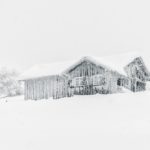Client Story: CU-Boulder on El Nino
By Ryan Bartlett
 The world is currently experiencing one of the strongest El Niños of the past century. The warming of seawater near the equator in the Pacific Ocean – exacerbated by the impact of climate change – has led to what many meteorologists are calling a ‘Godzilla’ El Niño… an event that’s expected to be at least as strong as the 1997-98 El Niño to which 189 deaths and $1.7 billion in property damage were attributed. During that event, Colorado experienced flooding and one of the worst blizzards in state history, which dumped from two to four feet of snow and left more than 4,000 people stranded at Denver International Airport in late October.
The world is currently experiencing one of the strongest El Niños of the past century. The warming of seawater near the equator in the Pacific Ocean – exacerbated by the impact of climate change – has led to what many meteorologists are calling a ‘Godzilla’ El Niño… an event that’s expected to be at least as strong as the 1997-98 El Niño to which 189 deaths and $1.7 billion in property damage were attributed. During that event, Colorado experienced flooding and one of the worst blizzards in state history, which dumped from two to four feet of snow and left more than 4,000 people stranded at Denver International Airport in late October.
The effects of El Niño on Colorado winters are unpredictable, but general trends and weather patterns have been observed in the past. Typically, El Niño winters are relatively warm and dry for Northern Colorado, with a couple of snowstorms in late October and early spring. The Front Range also typically experiences wetter weather in the spring, with one or two blizzards that deliver more than a foot and a half of snow. Ten of the last 13 El Niño events brought greater-than-average annual snowfall to the Denver area. In Southern Colorado, fall is typically wetter and warmer than average due to the Gulf Stream preventing cold air from making it as far south as it normally does.
Klaus Wolter of the National Oceanic and Atmospheric Administration said that skiers can expect to see a dry winter, but that an extended ski season will make up for it in the spring with the late-season storm systems that typically roll through in early March.
